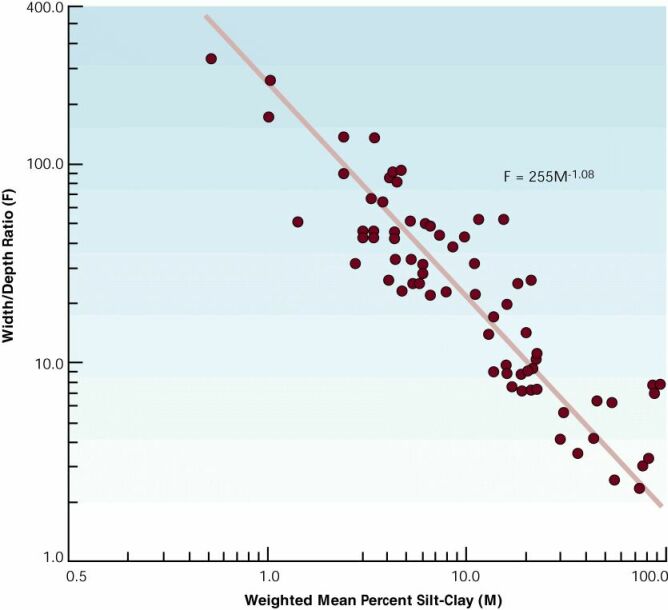
| glossary | menu | Normal | lg | hc | 4.) Geomorphologic Classification Systems > Classification by Aggrading and Degrading |
| < Previous | 1 | 2 | 3 | 4 | 5 | 6 | 7 | 8 | 9 | 10 | 11 | 12 | 13 | 14 | 15 | 16 | 17 | 18 | 19 | 20 | 21 | 22 | 23 | 24 | 25 | 26 | 27 | 28 | 29 | 30 | 31 | 32 | 33 | 34 | 35 | 36 | 37 | Next > |
Classification by Aggrading and Degrading

Classification of stability is difficult considering the complexity of FGM processes and the sensitivity of channel evolution to initial conditions. Schumm (1960) demonstrated that stability could be inferred from analysis of Stream Bankfull Width to depth ratios and the percent of silt and clay in the channel bank and bed boundary.
Aggrading Streams are generally found above the line of best fit on this graph, and degrading Streams below that line. In FGM analysis, field data could be used to infer stability. In theory, for restoration work, the Schumm graph could help identify design width and depth data for optimal stability.
Image courtesy of FISRWG
| < Previous | 1 | 2 | 3 | 4 | 5 | 6 | 7 | 8 | 9 | 10 | 11 | 12 | 13 | 14 | 15 | 16 | 17 | 18 | 19 | 20 | 21 | 22 | 23 | 24 | 25 | 26 | 27 | 28 | 29 | 30 | 31 | 32 | 33 | 34 | 35 | 36 | 37 | Next > |